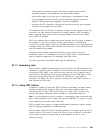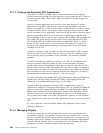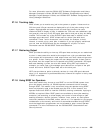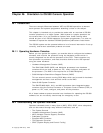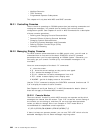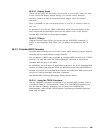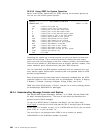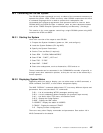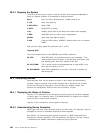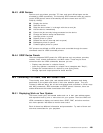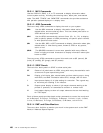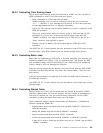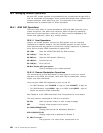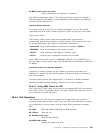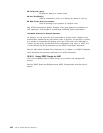
28.3 Controlling the OS/390 System
The OS/390 System commands are only a subset of the commands necessary to
operate the system. JES2, VTAM, and many other OS/390 components also have
a command language which is used to operate their subsystems. We
recommend that systems programmers and operators attend a class on basic
OS/390 (MVS) and JES2 facilities. In addition, there are more advanced classes
such as the ″CMOS Complex Systems Availability and Recovery″ (five days).
This section is for a new operator controlling a single OS/390 system using MCS
consoles with JES2 and SDSF.
28.3.1 Starting the System
Here is an overview of the steps to start OS/390:
1.
Prepare the System Hardware (power on, IML, and configure)
2.
Load the System Software (IPL-ing MVS)
3.
Specify the System Parameters
4.
Set the Time and Date (if required)
5.
Start JES2 - ″S JES2,PARM=NOREQ″
6.
Start VTAM - ″S NET,,,LIST=xxx″
7.
Start TSO - ″S TSO″
8.
Start RMF - ″S RMF″
9.
Start other subsystems, such as Automation, CICS and so on
These commands can be automated in the COMMANDxx member of parmlib, or
through some other automation product, so they do not have to be entered by a
human operator.
28.3.2 Displaying System Status
Depending what you want to display, you can either enter an MVS command, a
JES2 command, use SDSF, or use another subsystem display.
The MVS ″DISPLAY″ command (abbreviated ″D″) has many different objects and
parameters. Here are some basic ″D″ commands:
D R,L - List all outstanding WTOR messages awaiting reply
D R,U - List all outstanding Mount Requests (for example, tape mounts)
D A,L - List Active Jobs, TSO users, and Started Tasks
D D,S - Display the Dump Options
D SMF - Display the SMF status
D LOGREC - Display the status of LOGREC
D TRACE - Display the status of TRACE
D C - Display Console configuration
There are many other Display commands and parameters. See section 4.9 in
MVS Commands
for the details.
Chapter 28. Orientation to OS/390 Console Operation 447



